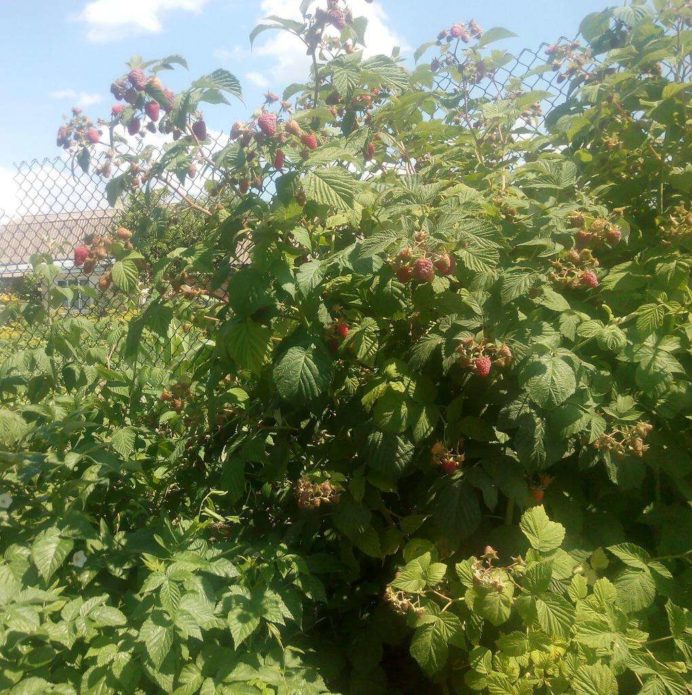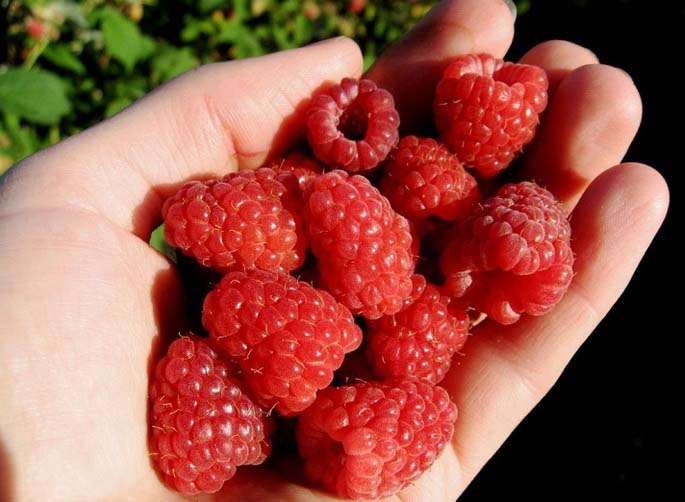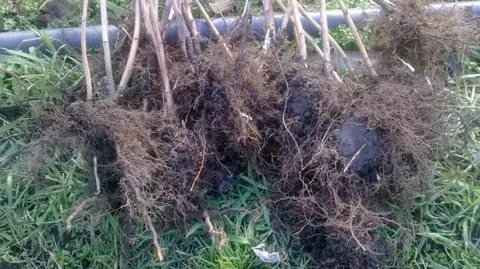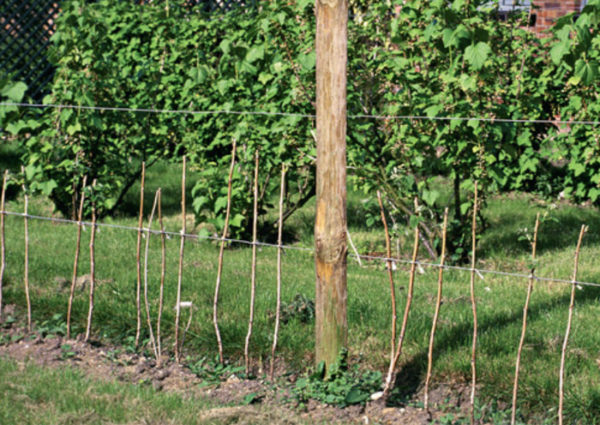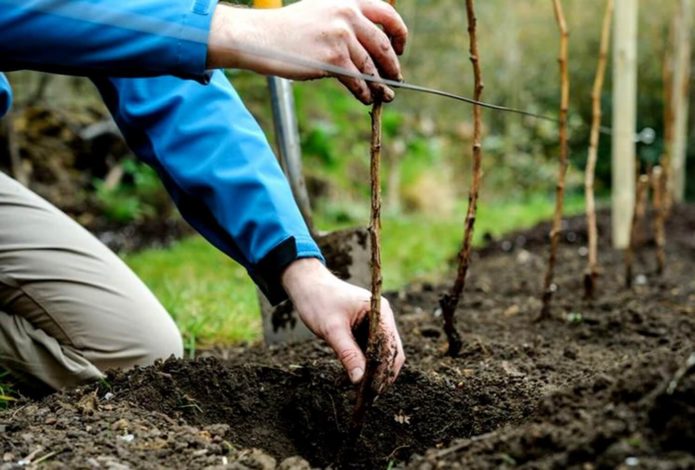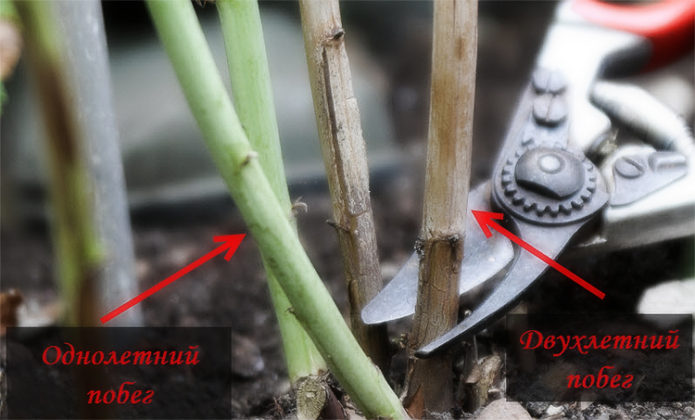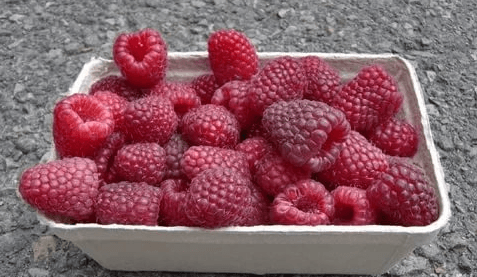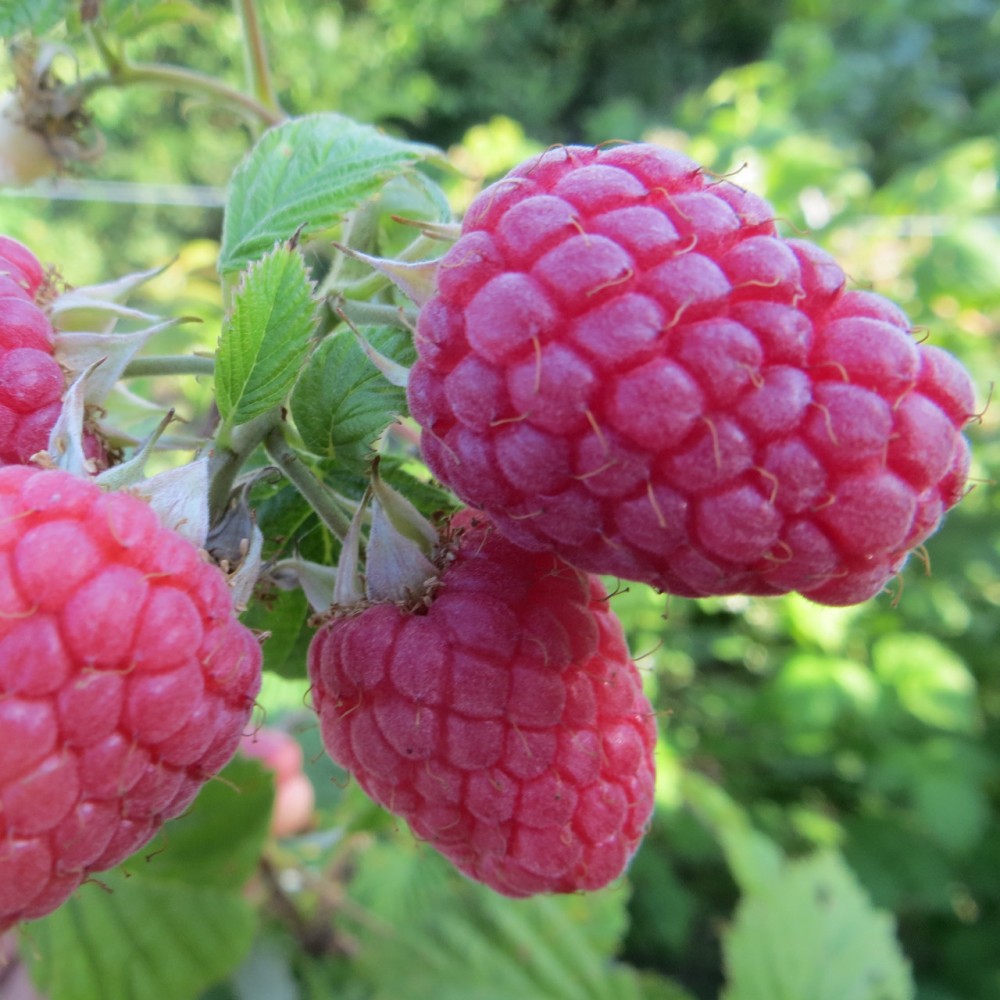Summer, winter-hardy raspberry Gusar is popular and widespread from the southern regions to northern St. Petersburg. Most gardeners give the most positive reviews about it. Why this variety is attractive and how to grow it - it will be useful to find out about it.
Content
Breeding history, description and characteristics of the Gusar raspberry variety
The variety was bred by the breeder I. V. Kazakov (copyright certificate No. 32417) together with S. D. Aitzhanova and V. L. Kulagina at the Kokinsky stronghold of the All-Russian Institute of Selection and Technology of Horticulture and Nursery at the end of the last century. In 1999 it was entered into the State Register for the Central, North Caucasian, North-West, Volgo-Vyatka and Middle Volga regions. Kazakov paid much attention to remontant high-yielding varieties of raspberries, which made him famous. Apparently, this is connected with the fact that most sources classify the Gusar variety as remontant, which it really is not. Many people confuse it with the Hercules variety of Kazakov's selection, which is really remontant.
So, Gusar is a summer variety, not remontant, early maturing. The bush is tall, spreading, formed by thick powerful shoots. Biennial shoots are brown, straight, with thorns at the bottom of the stem. The height of the shoots reaches two and a half meters or more and numerous fruit twigs are located along their entire length. Shoot-forming ability is average. Bears fruit on biennial and annual shoots. Grows well and bears fruit regularly in one place for up to twenty years. Frost resistance of the variety - up to -25 ° C, drought resistance - high. Possesses persistent immunity to viral and fungal diseases, practically not affected by pests. Some gardeners note the facts of the defeat of ripe berries by wasps.
The berries are blunt-conical and medium in size. Usually their weight is 3.2-3.6 grams, maximum - 5 grams. But some gardeners manage to grow berries weighing up to 10-12 grams with good care. Fruits are medium-dense, bright, shiny, red. The taste is excellent, sweet and sour. Sugar in berries is from 6.98 to 10.8%, vitamin C - from 27.2 to 37.8 mg /%. Tasting assessment of the taste of berries - 4.2 points, the quality of jam - 4.75 points. The purpose of the fruit is universal.
The yield is high. Up to three to four kilograms of berries are harvested from one bush. The average yield of the plantation is 83.6 c / ha. In central Russia, the yield potential is realized by 60-70%, since not all berries have time to ripen in autumn.
Table: advantages and disadvantages of the variety in comparison with similar
| Indicator | Advantages | disadvantages |
| Hussar |
|
|
| Indian summer |
|
|
| Bryansk jubilee |
|
|
| Hercules |
|
|
| Eurasia |
|
|
Video: review of raspberry hussar before harvesting
Features of agricultural technology of the raspberry variety Gusar
This raspberry, as noted above, is undemanding to care for and can grow and bear fruit with little or no involvement from the gardener. But, of course, with proper care, the indicators for the size of berries and yield will be much higher.
Landing
The most important stage of agricultural technology for raspberry Gusar is planting.
Choosing a landing site
First of all, you should choose a place for the raspberry tree. This must be approached carefully and responsibly, since the raspberry Gusar will remain in this place for the next 20 years. Better conditions look like this:
- Well lit place. It is best to avoid even slight partial shade.
- South side of the building, fence, dense plantings that protect the raspberry tree from the cold northern winds.
- Smooth or with a slight southern or southwestern slope.
- Deep bedding of groundwater, no stagnation of moisture.
- Loose loamy or sandy loam soil with neutral acidity.
- Lack of potatoes, tomatoes, strawberries among the predecessors.
- It is best to grow legumes, pumpkin, zucchini and green manure in this area a year before planting raspberries.
If the planting is planned for the fall, then the preparation of the site begins a month before this event. For spring planting, the soil is prepared in the fall. Preparation begins with removing weeds or cutting green manure. The cut green manures are evenly distributed over the site and covered with a layer of humus or compost. You will need at least two buckets of organic fertilizer per square meter. And also you need to add wood ash in the amount of 0.3-0.5 l / m2 and superphosphate at a rate of 60 g / m2... After that, the soil is plowed up or dug up with the incorporation of fertilizers into the inner layers. And besides, it is worth decontaminating the soil with a 3% solution of copper sulfate by spraying.
Landing dates
In regions with a warm climate, you can plant raspberries both in the spring (before the onset of sap flow) and in the fall (after the sap flow stops, one month before the onset of cold weather). In the case of purchasing seedlings with a closed root system, the planting timing does not matter - you can plant from early spring to late autumn (but a month before the onset of cold weather).
Saplings - selection and storage
For planting, both annual and biennial plants with a well-developed root system are suitable. The stems must be healthy and smooth, with a diameter of 10-12 centimeters. Experienced gardeners are trying to acquire seedlings in the fall, since at this time the choice of high-quality planting material is much richer.
Before spring planting, the seedlings overwinter safely buried in the ground.To do this, you need to dig a shallow (15-20 centimeters) trench, into which the plants are placed obliquely, after dipping the roots into a solution of mullein and clay (the so-called talker). After that, the roots and most of the stems - about 3/4 of the length - are covered with soil and covered with spruce branches. And also seedlings can be stored in the basement at a temperature of 0— + 5 ° C.
Planting raspberry seedlings Husar
It is more convenient to grow raspberries on a trellis. To do this, plant seedlings in rows. Since the Husar bush is quite voluminous and spreading, the distance between the rows should be done within 1.5-2.0 meters. The interval of planting raspberries in a row is 1 meter. The height of the posts above ground level is 3 meters. Before planting, a trellis should be installed, for which wooden or metal poles are dug in along the row with an interval of 3-3.5 meters. Three rows of wire or a thin cable are pulled onto the posts with an interval of 0.5-1.0 m.
When the soil and trellis are ready, you can start planting as planned. For this:
- A few hours before planting, you need to soak the roots of the seedlings in a solution of a root formation stimulator (Kornevin, Heteroauxin, Epin).
- Mark the arrangement of seedlings in a row and dig holes with a diameter and depth of 30 centimeters.
- A small mound is formed in each hole.
- A seedling is placed on a mound with its root collar to the top, and the roots are spread evenly in diameter.
- The hole is covered with earth in layers, gently ramming each layer until it is completely filled. In this case, you need to ensure that the root collar remains at ground level.
- Cut off the seedlings at the level of 30-40 centimeters from the ground - so it will be easier for them to root.
- A tree-trunk circle is formed around each plant to retain moisture during watering.
- Pour water abundantly until the trunk circle is full. After absorption, repeat the procedure two more times. As a result, the soil will adhere well to the roots, and the air sinuses in the root zone will disappear.
- The next day, the trunk circles are loosened and mulched with humus, compost, rotted sawdust, needles, etc.
Growing and care
To get good harvests of Gusar raspberries, you need to perform certain care measures.
Watering
It is better to water the raspberries at the root. On flat areas, you can combine the trunk circles into one common long "tray". When watering, it is easy to fill with water simply by placing a hose at one end. Sprinkler irrigation can be used in extreme heat. It is better to water in the evening, when the heat subsides, so that the moisture evaporates less. After the top layer of the soil has dried, it should be loosened and mulched. If the raspberry plant is quite large, then it would be wise to use a drip irrigation system for irrigation.
Top dressing
Raspberry Gusar is responsive to regular feeding. She especially loves organics. Therefore, it is advisable to use humus or compost as mulch.
Table: Fertilizing Raspberry Husar
| Fertilizers | Terms of introduction | Method of application | Dosage |
| Nitrogen-containing mineral fertilizers (urea, ammonium nitrate) | April | Spread evenly in the near-trunk circles and then watered abundantly until completely dissolved. You can also dissolve the fertilizer in water and water the plants. | 20-30 g / m2 |
| Potassium fertilizers (potassium monophosphate, potassium sulfate) | The beginning of June | Dissolve in water and use for watering | 10-20 g / m2 |
| Liquid organic infusions | The concentrate is preliminarily prepared by insisting organic matter in warm water for a week:
In the future, the resulting concentrate is used for feeding raspberries, additionally diluting with water 1: 10. | 1 liter of concentrate per 1 m2... Top dressing is repeated during the season with an interval of 2-3 weeks. | |
| Superphosphate | October November | Digging | 30-40 g / m2 |
| Humus, compost | 5-10 kg / m2 |
Trimming
Raspberry hussar is cut in the fall, removing two-year-old shoots that have bore fruit, as well as damaged or diseased ones (this happens extremely rarely). Frozen shoots are cut out in early spring (if any). Since the shoot-forming ability of the variety is low, it is not necessary to thin out the bushes. If, nevertheless, some thickening is observed, then the extra shoots are usually used for reproduction. When young shoots reach a height of 1.5-2.0 meters, you can pinch them by 10-15 centimeters, thus stimulating the appearance of lateral fruitful news.
Harvesting and using the crop
It is better to pick berries in dry weather early in the morning while they are still cool. If dew falls on the bushes, wait until it dries with collection. Carefully remove the berry from the fruit, slightly twisting it. The collected fruits are placed in plastic containers or birch bark tuesques, which are placed in the refrigerator as soon as possible. There raspberries can be stored for several days, but it is better to eat them or process them faster. Gusar raspberries are suitable for drying and freezing. They make excellent jams and preserves, as well as liqueurs and wine with exquisite taste and aroma.
Preparing for winter
In the fall, after harvesting and the end of leaf fall, the following work is carried out:
- Pruning.
- Collection of fallen leaves and its disposal.
- Deep digging of the root zone with the introduction of fertilizers.
- Tying shoots in a horizontal position and warming them with spruce branches, spunbond, etc.
Reviews
The hussar liked the taste and size of the berries, the planting of the first year, it is still difficult to judge by the yield, the description says "does not require a garter", but, apparently, they are cunning, now the seedlings are 1.60 m, they began to bend even without berries. Next year we will make tapestries.
I have Hussar, in general, the strongest variety. now it is already about 2.5 meters, this is provided that I pinched it from 1.5 meters. already 2 times. Of course, it is necessary to tie it up, although it is very strong. Sincerely.
Re: Hussar
If you do not cut it will bear fruit and so. Only the berries are smaller on top. And on the sides, fruitful laterals also grow. The variety is very easy to serve and the berry is delicious.
Re: Hussar
Quote: Originally Posted by Apple View Post Our malinnik all consists of Gusar. We are very pleased with the hussar. I believe that this is almost the best domestic raspberry variety now in terms of the sum of its positive economically valuable properties.
I support all service stations. I only have one row, but I will breed more. I will add that the growth gives as much as needed for the next year. You can cut it for winter and spring. In short, if you want to grow raspberries without a headache - plant GUSAR !!
About Gusar I can say the following: I bought it in the Pushkin nursery (St. Petersburg) about 6 years ago, I am satisfied with the variety, the berry is not super-large, but very tasty, I shared the seedlings of this variety with many neighbors, the growth does not give much, but enough, especially after good feeding ... I have many different varieties of raspberries, but this variety takes a good place on the site. It is eaten directly from the bush, so it grows in a square column not far from the house - always at hand. I want to add a little planting with this variety in the garden. In winter it never froze. And among other varieties, there are always more wasps around Gusar, they clearly prefer it, apparently, they also like its taste.
I have been growing Hussar for 10 years, it takes about a hundred square meters. This year, for the first time, I was unpleasantly surprised by the fact that there are a lot of small berries, especially on shoots with abundant ovary. With what it can be connected?
Best regards, Levin Ivan.
Re: Hussar
I had a similar story last season. Then I noted for myself, having analyzed the possible reasons:
1. Snowless cold winter.
2. Lack of moisture in the soil at the beginning of the season. Watering is clearly not enough, my fault.Spring and early summer began and continued with rather hot and dry weather.
This season, the situation has improved. Raspberries have never been watered, enough rains. There are many and large berries. The feeding did not change.
Thanks to an impressive set of advantages, in the absence of shortcomings, the Gusar raspberry variety is in the forefront among similar ones. It is easy to grow, and the taste and aroma of large berries with high yields will reward the gardener for his work. We can confidently recommend this wonderful raspberry for cultivation both in personal plots and in farm fields.
